You know what? Even if you buy the most advanced Air Scrubber, as long as you are too lazy to maintain it, it is just a decoration.
Many people think that the "purifier" to buy back to clean the air all the time, the results of a few months after the home air is still cloudy, stuffy heavy, and even a bit of odor - this time you have to ask yourself a question: how often do you Clean Air Scrubber! How often do you Clean Air scrubbers? How often do you change your Carbon Filter?
Don't worry—this article isn't going to be a “vague recommendation.” We're going to get down to the nitty-gritty and make sure you know the intervals, cleaning frequency, and replacement logic for each type of filter and can do it at home right away.
Do Air Scrubbers Need To Be Cleaned?

Yes. Absolutely. No exceptions.
Air scrubbers aren’t magic boxes. They don’t destroy dirt with a wave of a wand. Their mechanism is brutally simple and impressively effective. An air scrubber pulls in air, runs it through a series of filters, traps dust, odors, pollen, smoke particles, mold spores, and even viruses, then pushes out cleaner, fresher air.
But here’s the catch —Where do all those nasty particles go? They don’t disappear. They stay trapped inside the filters. And if you don’t regularly clean your air scrubber, guess what happens: Filters get clogged, airflow drops, and purification performance tanks.
Mold and bacteria start growing inside — now your air scrubber is spreading pollution, not cleaning it. The motor works harder — more wear, more heat, shorter lifespan. Don’t clean it, and your air scrubber becomes a dirty, smelly fan.
A Clean Air Scrubber isn’t a luxury—it’s the only way your unit can actually do its job. Dust and debris don’t take a break, and neither should your maintenance routine.
So, if you haven’t opened up your unit in months?
It’s time. Right now.
What Types of Filters Are Inside an Air Scrubber?
Before you can properly clean or replace your air scrubber, you need to know exactly what kind of filters you're dealing with. Most air scrubbers come equipped with at least three different types of filter layers, each designed for a specific job and requiring its own style of care.
Pre-filter
Think of it as the net that catches the big stuff before it clogs up the finer, more sensitive filters behind it. It's washable in most cases and should be cleaned often to keep airflow strong and the deeper filters protected. This is the first line of defense. The pre-filter is designed to capture large particles such as: Hair, Dust, Pet dander, Lint.
Carbon Filter (Activated Carbon Layer)
This filter is your air scrubber’s odor and gas trap. The carbon filter specializes in absorbing household odors, cooking smells, cigarette smoke, volatile organic compounds (VOCs), and chemical fumes.
Made from activated charcoal, this filter doesn’t just mask odors—it chemically absorbs them. However, once saturated, it loses effectiveness quickly and needs to be replaced, not washed. If you can start to smell things again, your carbon filter will probably be maxed out.
HEPA Filter (High-Efficiency Particulate Air)
This is where the real microscopic cleanup happens. HEPA filters are made of ultra-fine fibers packed tightly together to trap particles down to 0.3 microns with 99.97% efficiency. These filters are not washable. Once they become dark, clogged, or begin to smell, they need to be replaced—no exceptions. A true HEPA filter captures: PM2.5 and smaller particulates, Bacteria, Mold spores, Allergens, even some viruses
Each of these filters plays a crucial role in how well your Air Scrubber performs. And because each one tackles a different kind of pollutant, they wear out at different rates and require unique care routines. You can’t treat all filters the same.
How Often Do You Change The Filter On An Air Scrubber?

If you don’t use your air scrubber or air purifier every day, your filters will last longer. But even if it's just sitting in the corner, collecting a little dust each day, that still adds up. And when you're actively using it, especially in homes with pets, smokers, or heavy cooking, you’ll need a regular cleaning and replacement schedule to keep your Air Scrubber running at peak performance. Here’s a filter-by-filter breakdown。
Pre-filter (First Defense Layer)
Cleaning Frequency: Every 2 weeks to 3 months, depending on your environment. Got pets? Clean it every 2 weeks. Live in a dusty or high-traffic area? Stick to monthly cleaning. Cleaner, quieter homes? You might stretch it to every 3 months.
Most pre-filters are washable. Remove them, rinse under cool water, gently scrub off visible debris, and let them fully dry before reinstalling.
Usually 1 to 2+ years. Pre-filters are made to last, but should be replaced if: They tear or deform, They're permanently stained, They lose structural integrity
Tip: A clean pre-filter protects the inner filters and extends their life, so treat this step seriously.
Carbon Filter (Activated Carbon Layer)
Most Carbon Filters are not washable. Trying to rinse them will ruin the porous carbon material. Instead, lightly vacuum or tap them clean once every month to remove loose dust and surface gunk.
This varies a lot based on how often and how intensively you use your Air Scrubber:
Standard use (e.g., 6 hours a day in a clean home): Every 6 to 12 months
Heavy use (smoking indoors, pets, lots of cooking): Every 3 to 6 months
Light use (rarely turned on): Can last up to 2 years, but test for odor retention
How to Know It’s Time to Replace: Sniff test. No joke. If your Carbon Filter smells musty, smoky, or chemical, it has saturated. And a saturated Carbon Filter can't absorb odors anymore. The stinkier it gets, the less effective it becomes. Don’t ignore the signs—replace, don’t rinse.
HEPA Filter (High-Efficiency Filter for Fine Particles)
HEPA filters are not washable. Water ruins the fiber density that traps microscopic particles. Instead, vacuum them gently every 2 to 3 months to remove surface dust buildup. Use a soft brush nozzle and avoid pressing hard.
Replacement Frequency
-
Daily usage (~4 hours/day): Replace every 9–12 months
-
Heavy usage (~10+ hours/day): Replace every 3 to 6 months
-
Occasional usage (e.g., once a week): Can last up to 2 years
Visual Signs It’s Time to Replace: Turning yellow, gray, or black, Presence of mold spots or odor, Sharp drop in airflow or air quality. If it looks gross or smells off, it’s no longer safe. Don’t hesitate—swap it out.
Filter maintenance is like brushing your teeth—you don't wait until there's a problem. Regularly clean your Air Scrubber, keep the Carbon Filter fresh, and don’t skimp on replacing your HEPA filters.
Clean air isn’t automatic. But with the right schedule, your air scrubber will keep your lungs happy and your home healthier.
How to Know When Your Air Scrubber Needs Cleaning?
Don’t wait for your machine to beep or flash a warning. By the time your Air Scrubber is alerting you, it’s already been struggling for a while. Instead, get ahead of the game with these clear, visible, and audible signs that scream: “Clean me—NOW.”
Reduced Airflow or Louder Operation
Notice that the air isn’t blasting out like it used to? Maybe it sounds like a small jet engine now? Drop in airflow = Your filters are clogged. Increase in fan noise = The motor is working overtime trying to push air through blocked layers. This is your first red flag. When filters get stuffed with dust, pet hair, and other gunk, airflow drops fast, and the scrubber has to strain to do its job.
The Air Smells... Off
Walk into the room and catch a whiff of something stale? Damp basement? Lingering cigarette smoke? That’s your Carbon Filter crying for help. A dirty Carbon Filter can't absorb odors anymore. It might even start to release the smells it once trapped. If your air smells worse after running the scrubber, shut it off and inspect the filters.
Tip: Trust your nose. It’s often more accurate than any sensor.
Filter Color Has Changed
Take a look at the HEPA filter or Carbon Filter (if accessible). If they’ve gone from white or light grey to: Yellow, Dark brown, Black, Moldy spots…it’s time. No excuses.
HEPA filters are meant to catch ultra-fine particles. When their surface is visibly dirty, the internal layers are already maxed out. Carbon filters, once they start to look like burnt toast, have stopped doing anything useful.
Pre-Filter Looks Like a Dust Carpet
Pop open the front cover and check the pre-filter. If you see: Matted dust, Clumps of pet hair, A thick gray film, Insect debris (yes, it happens).
It’s shocking the first time you see it. But once you clean it, you’ll notice how instantly the airflow improves and how much quieter the machine gets.
What Is The Maintenance On An Air Scrubber?
Keeping your Air Scrubber in top shape doesn’t require an engineering degree. It just needs consistency, a little elbow grease, and a proper schedule. Below is your no-excuse maintenance checklist—designed to be printed, taped to a wall, and actually followed.
Filter Maintenance Chart
|
Filter Type |
Cleaning Frequency |
Replacement Cycle |
Notes |
|
Pre-filter |
Every 2 weeks – 3 months |
Every 1 – 2 years |
Washable. Dry completely before reinstalling. |
|
Carbon Filter |
Light cleaning monthly |
Every 3 months – 2 years |
Not washable. Vacuum or replace when saturated. |
|
HEPA Filter |
Vacuum every 2–3 months |
Every 3 months – 2 years |
Never wash. Replace if discolored or smelly. |
Set reminders on your phone or smart calendar: 30 days, 90 days, 180 days.
Write down the date each time you clean or replace a filter. Tape it next to this chart.
Stock spare filters in advance so you don’t delay when one goes bad.
If unsure, trust your senses: if it smells weird or looks dirty, it's time.
If you still have any questions about air scrubbers, you can check out the knowledge we have posted in the past.
Conclusion
The first step you can take is simple: get the Clean Air Scrubber now, and remember - it's not about the machine, it's about the breath you take into your lungs every day.
Still want to see a more professional comparison of purification devices? Or a do-it-yourself DIY Carbon Filter replacement illustration? Leave a comment in the comments section, and I'll write it up!

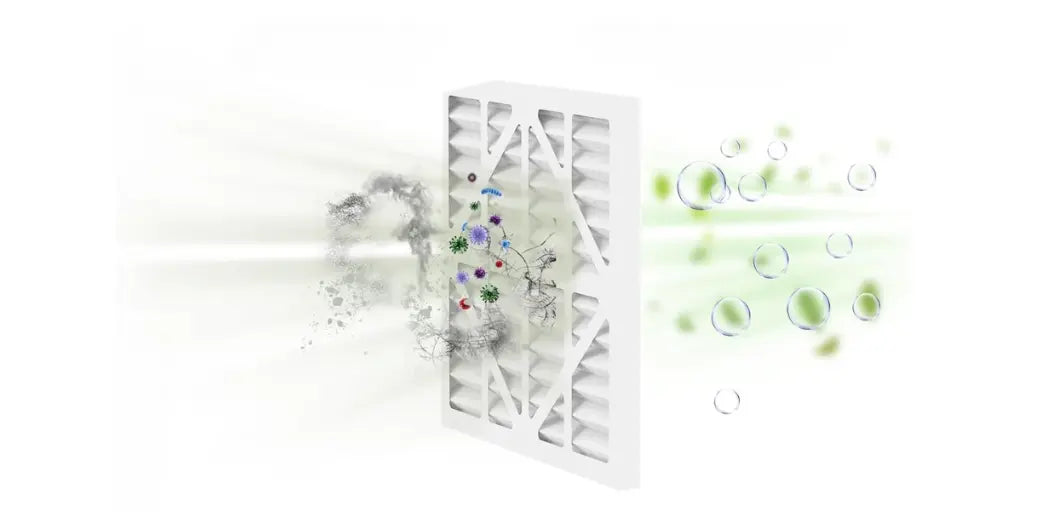

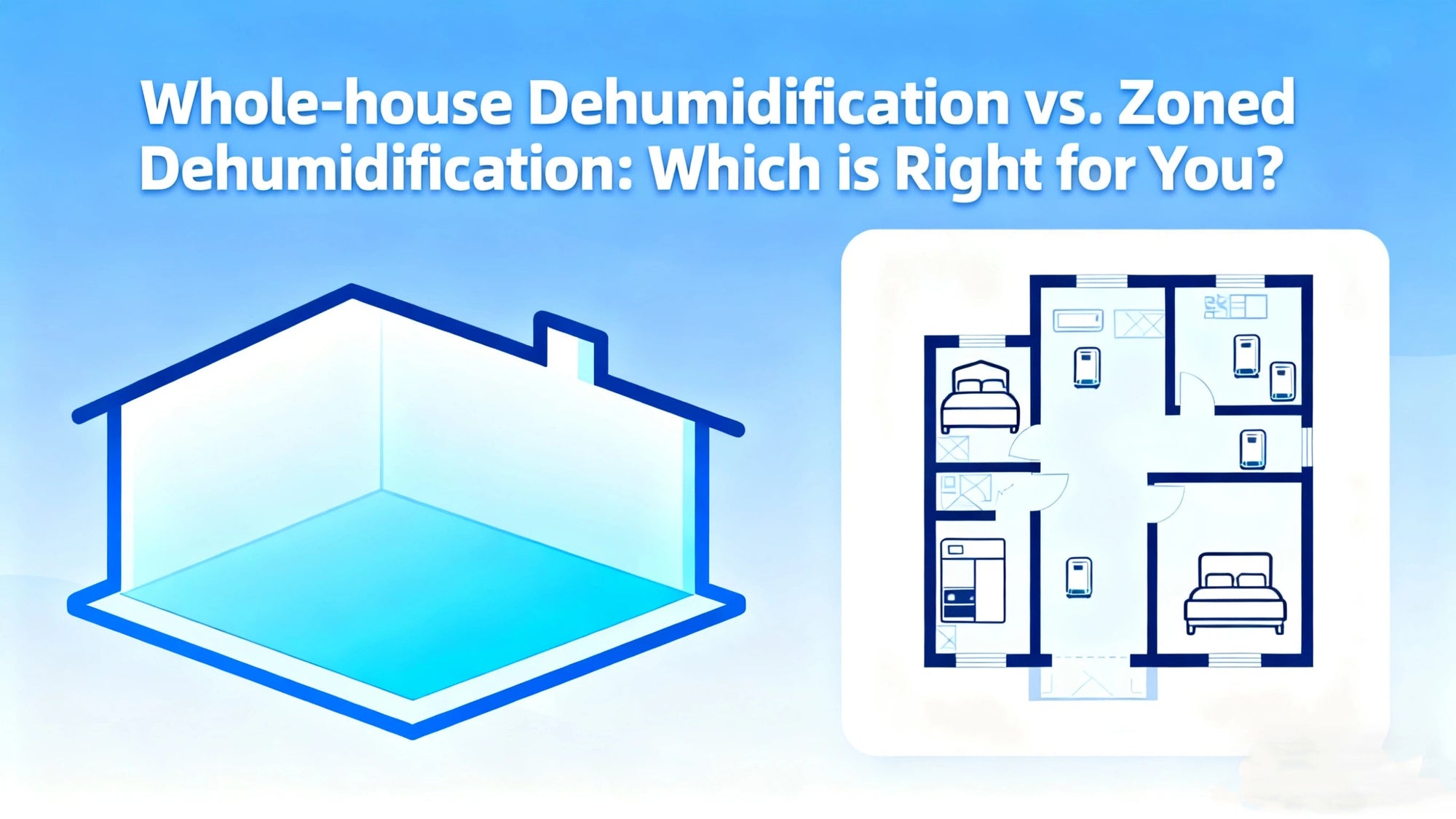
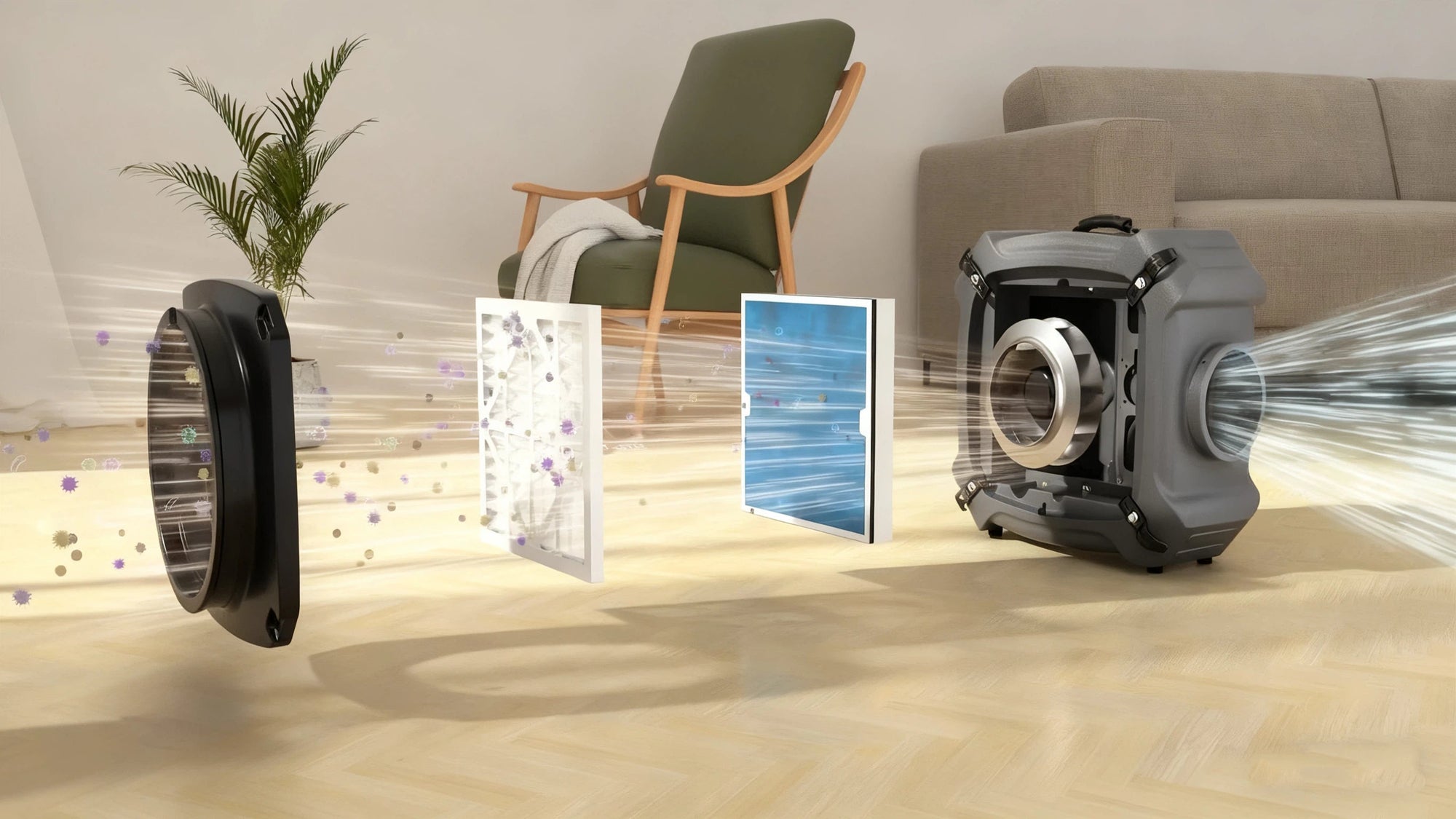
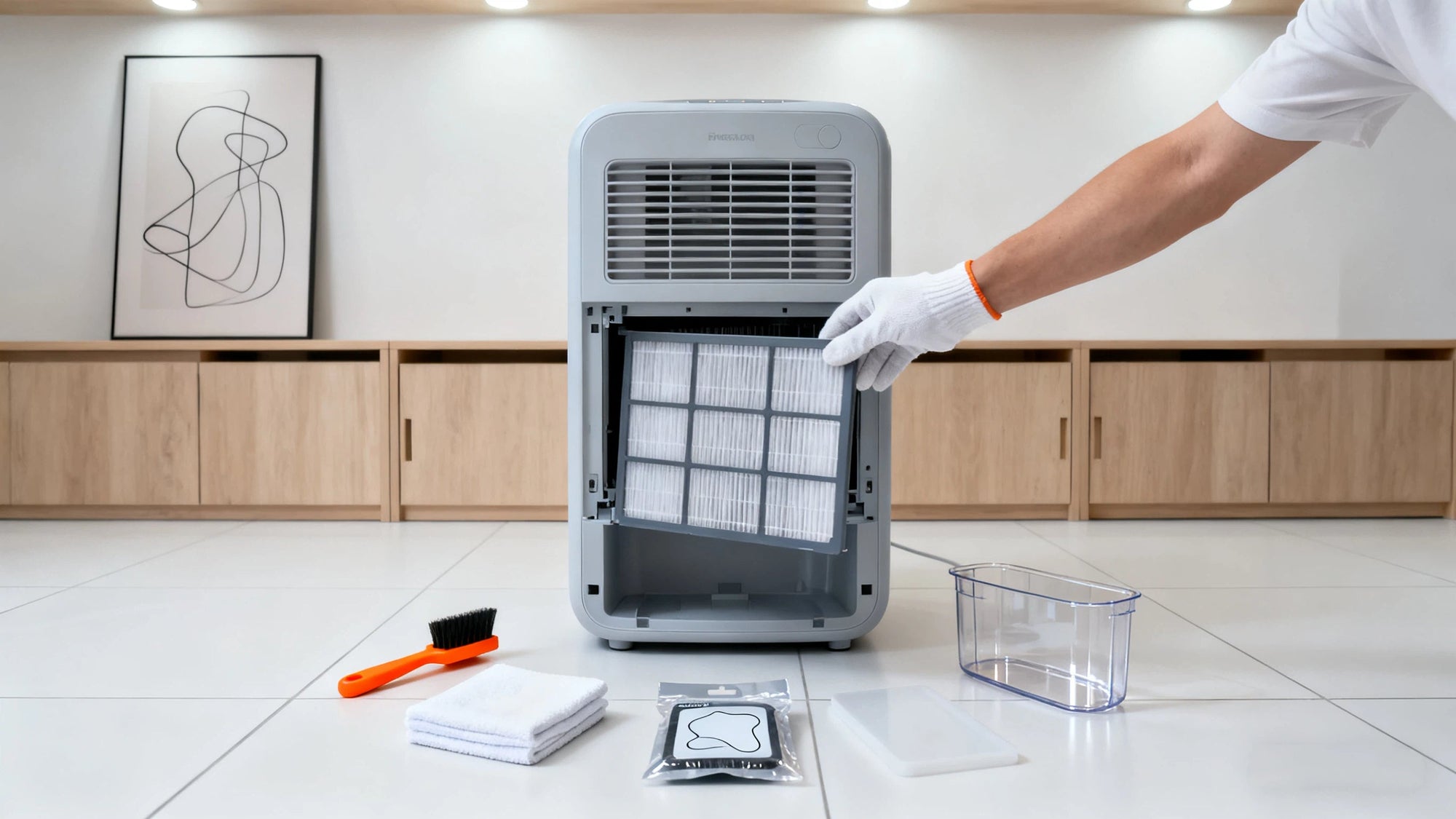
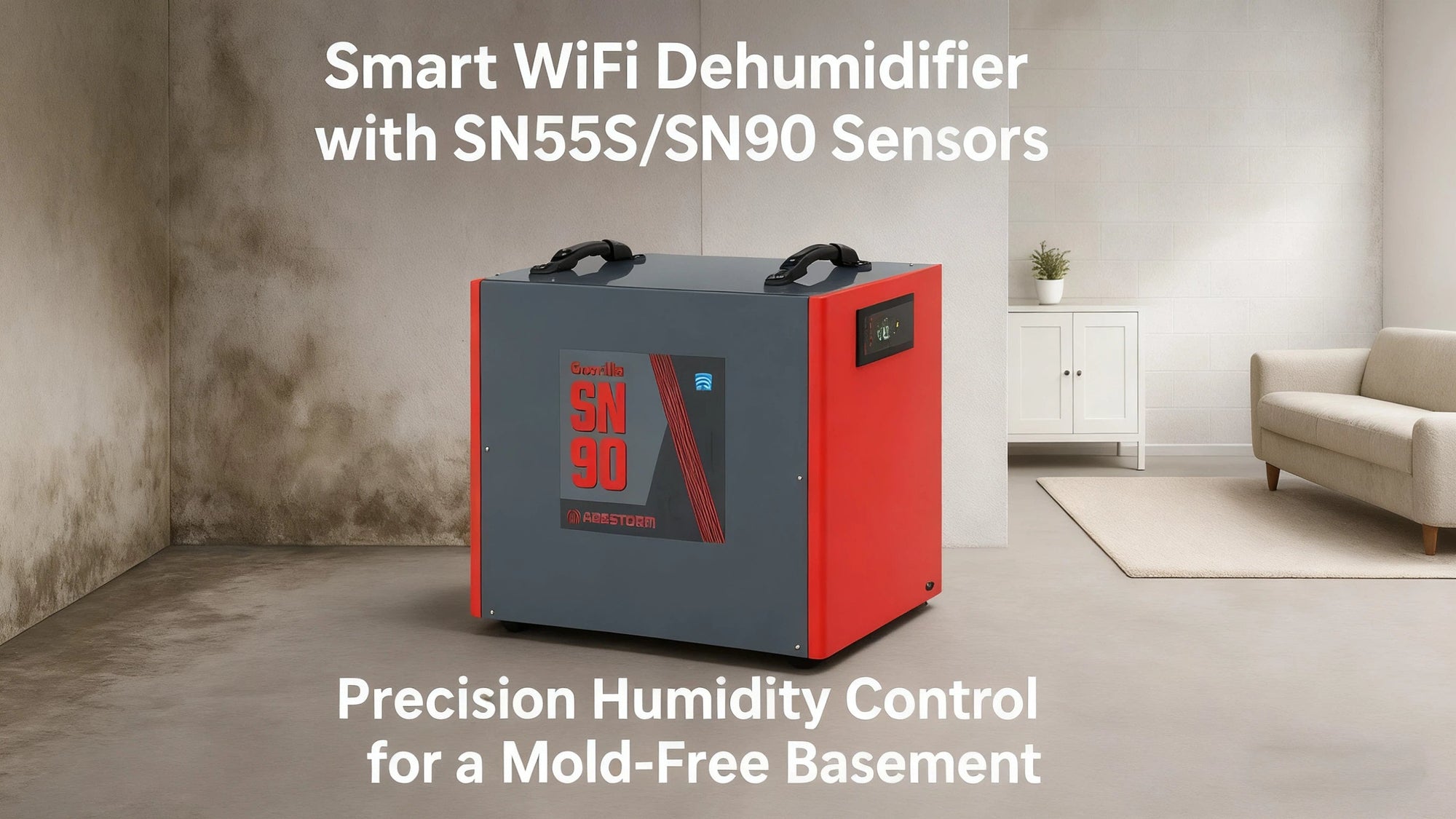
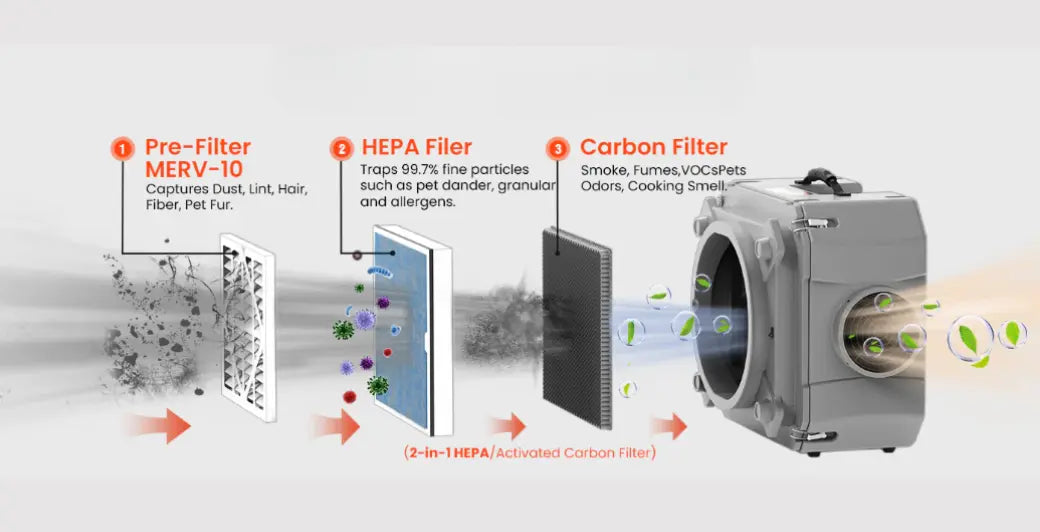
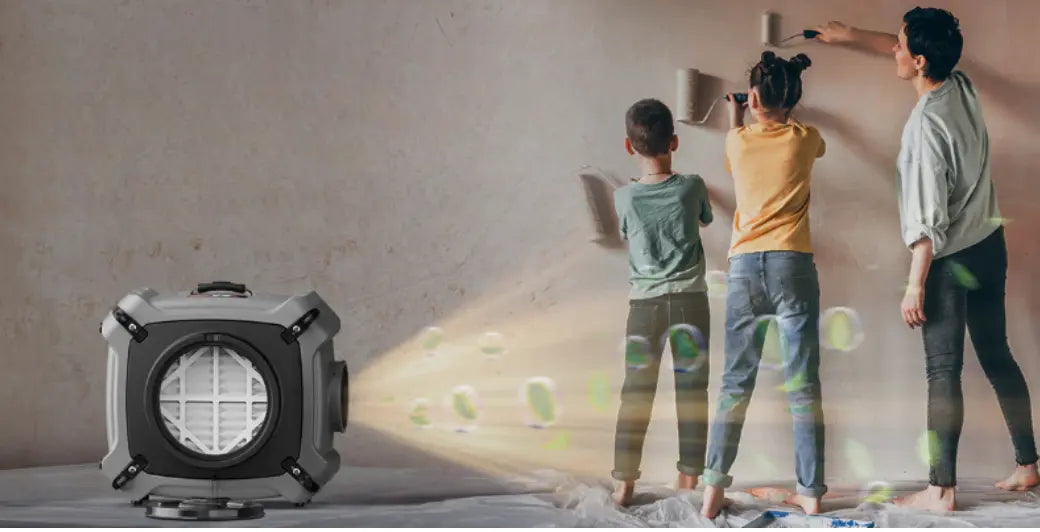
Shop For Dehumidifier
Abestorm 170 PPD 2,100 Sq.Ft Commercial Dehumidifier with Pump and Drain Hose | Hurricane 800
Abestorm 180 PPD 2,300 Sq.Ft Commercial Dehumidifier with Pump and Drain Hose | Hurricane LGR85
Abestorm 180 PPD 2,300 Sq.Ft Smart WIFI Commercial Dehumidifier with Pump and Drain Hose | Hurricane LGR85-Grey (wifi app not available now)
Abestorm 264 PPD 3,000 Sq.Ft Commercial Dehumidifier with Pump and Drain Hose | Hurricane 125P